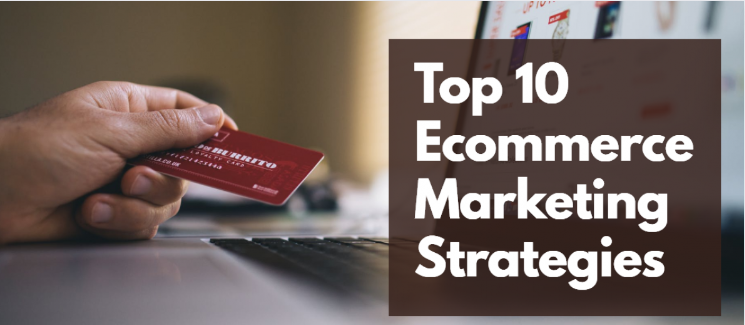In the ever-evolving landscape of e-commerce, staying ahead of the competition and consistently increasing sales and conversions is a constant challenge. As technology advances and consumer behavior changes, e-commerce businesses must adapt their marketing strategies to remain relevant and successful. In this blog post, we’ll explore some effective e-commerce marketing strategies to help boost sales and conversions online.
1. Optimize Your Website
Your e-commerce website is your digital storefront, and its design and functionality play a pivotal role in influencing visitor behaviour. Ensure that your site is user-friendly, mobile-responsive, and easy to navigate. Fast loading times, clear product descriptions, high-quality images, and a streamlined checkout process are essential elements to focus on. A well-optimized website can reduce bounce rates and encourage visitors to explore your offerings, ultimately leading to higher conversions.
2. Search Engine Optimization (SEO)
SEO is a fundamental strategy for e-commerce success. Optimize your website’s content, meta descriptions, and product listings with relevant keywords. Create valuable, informative, and engaging content that not only attracts search engine traffic but also provides value to your audience. An effective SEO strategy can increase organic traffic, improve your site’s visibility in search results, and boost sales.
3. Content Marketing
Content is king in the world of e-commerce. Develop a content marketing strategy that includes blog posts, videos, infographics, and social media posts to engage your audience and showcase your products. Share informative and entertaining content that addresses customer pain points, offers solutions, and demonstrates the benefits of your products. Content marketing helps build trust, establish your brand as an authority, and encourage repeat purchases.
4. Email Marketing
Email marketing remains a powerful tool for e-commerce businesses. Build a list of engaged subscribers and send targeted email campaigns. Use personalized product recommendations, exclusive offers, and informative content to nurture leads and convert them into customers. Automated email sequences, abandoned cart reminders, and post-purchase follow-ups can significantly increase conversion rates and customer retention.
5. Social Media Advertising
Leverage the power of social media platforms to reach your target audience. Create visually appealing ads and run targeted campaigns on platforms like Facebook, Instagram, and Pinterest. Use retargeting ads to remind potential customers of products they’ve viewed but haven’t purchased. Social media advertising allows for precise audience targeting, making it an effective way to boost sales and conversions.
6. Influencer Marketing
Collaborating with influencers in your niche can help you tap into their established audience and build credibility for your brand. Identify influencers whose values align with your products and brand identity. Encourage them to create authentic content that showcases your products to their followers. Influencer marketing can drive traffic to your website and increase conversions, especially if the influencers have a highly engaged following.
7. Customer Reviews and Testimonials
Positive reviews and testimonials are powerful social proof that can significantly impact a potential customer’s decision to buy. Encourage satisfied customers to leave reviews on your website or on popular review platforms. Highlight these reviews on your product pages to build trust and credibility. Respond to customer feedback, whether positive or negative, to demonstrate your commitment to customer satisfaction.
8. Loyalty Programs and Discounts
Reward loyal customers with exclusive discounts, early access to sales, and loyalty programs. Repeat customers are more likely to convert and spend more than new ones. By implementing loyalty initiatives, you can encourage repeat purchases and create a community of loyal brand advocates.
9. A/B Testing and Analytics
Regularly analyze your website’s performance and marketing campaigns using A/B testing and analytics tools. Experiment with different strategies, such as pricing, product descriptions, and call-to-action buttons, to determine what resonates best with your audience. Data-driven decisions can help you fine-tune your marketing efforts and optimize conversion rates.
10. Mobile Optimization
With the increasing use of smartphones for online shopping, it’s crucial to optimize your e-commerce site for mobile users. Ensure that your website is responsive and offers a seamless mobile shopping experience. Mobile-friendly websites not only attract more visitors but also convert them into customers more effectively.
In conclusion, e-commerce marketing strategies are not one-size-fits-all, and what works for one business may not work for another. To boost sales and conversions online, it’s essential to continually adapt and refine your marketing approach based on your target audience’s behavior and preferences. By implementing a combination of these strategies and staying up-to-date with industry trends, your e-commerce business can thrive in the competitive digital marketplace.





